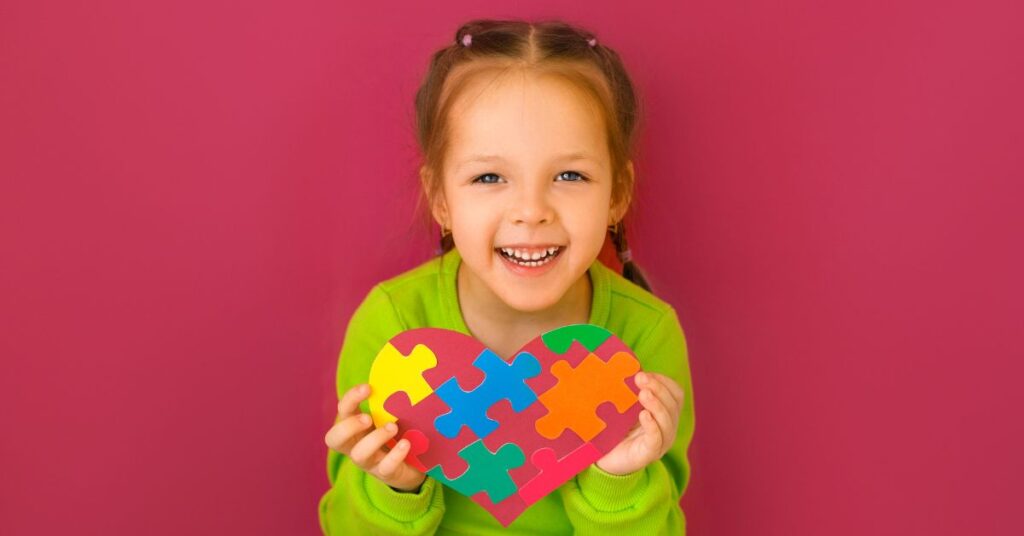Supporting a child’s emotional well-being in schools is now a top recommendation by the CDC. This is because cases of probable mental health in children have gone up to one in six school-going children since 2021, and suicide rates among young people is at an all-time high.
But how exactly do you support a child’s emotional well-being in these trying, unprecedented times?
It comes down to building and nurturing stable relationships among family members and peers. Stable relationships boost a child’s confidence, encourage emotional stability and enable them to build better social skills and coping strategies.
But I hear you, it can’t be that easy, can it?
Truthfully, building responsive, nurturing relationships with kids and family members in the age of technology and 60-hour work weeks is not easy.
I will, however, go deeper into what this looks like and how we, as parents and guardians, can support and protect our children’s right to feel okay, happy and thriving.
But first….
What is Emotional Well-being?
Well-being refers to the state of doing and being okay. A child’s emotional well-being is the ability to enjoy their life, have a positive outlook and build/maintain positive relationships with others.
See how many times I used the word POSITIVE?
Emotional well-being is also the ability to be resilient and adaptable, as well as manage one’s emotions. It entails knowing oneself and facing problems without crumbling like biscuits in the face of a challenge.
This, in no way, means suppressing their emotions- that’s the worst thing a person can do. It’s about expressing their feelings (positive or negative) in a healthy manner without ruining relationships.

In a nutshell, an emotionally and mentally healthy child is:
- Happy and enjoys life mostly.
- Feels and talks about themselves and life positively the majority of the time.
- Has successful relationships with their peers and adults.
- Shows high levels of engagement in school and other activities.
- Is able to manage their emotions and bounce back after a challenge.
The opposite of this is a child who is withdrawn, shows signs of long-lasting sadness and irritability, has mostly negative feelings and words towards themselves or life, and has issues controlling their emotions of anger, sadness, fear and excitement.
Unfortunately, as I have seen recently, teenagers can seem well because they are doing great in school, they have friends, and they take part in extracurricular activities.
This is where deeper relationships with parents come in because you have to be close enough to notice when teens are not okay emotionally and mentally.

Why Children’s Emotional Wellbeing Matters
One, there is a close link between a student’s emotional well-being and their academic success. Of course, we have a few exceptions to the rule, but a sudden drop in grades is a sign of emotional and mental disturbance. Emotional wellness helps them learn effectively and cope with day-to-day challenges.
Also read: How to Improve Math Skills and Reading for Kindergarten Kids
Two, the absence of emotional well-being makes a child vulnerable to vices like substance use, pornography, gambling and lust in teenage hood and young adult years.
They are also vulnerable to peer pressure, people pleasing and narcissistic behavior, trying to get something they are lacking within from other people.
And lastly, emotional well-being is closely related to mental and physical well-being. Eventually, the three aspects start affecting each other.
Prolonged sadness, irritability and negative outlook turns into depression or anxiety and then physical illnesses begin to manifest sooner than later.
How to Support Your Child’s Emotional Wellbeing in Schools

1. Prepare Your Child
If your child is joining a new school or grade, preparation is key. Attend the orientation together, meet the teachers, tour the school and let the child get familiar with their new environment in your presence.
Hopefully, they will meet other new students and start friendships right there. It will also be helpful to practice the morning routine before opening day so it won’t be so stressful.
Parents forget to prepare their children emotionally in the rush of buying the necessities and putting school fees together.
Take some time to sit down and talk about how the child feels, their fears about joining that school or grade and how you can help. If you have any suggestions to make their life easier, this is the time to give them.
Refrain from minimizing their feelings and only show support and understanding. This applies to new schools and new grades as well. Joining a new class with a new teacher and classmates can be intimidating for kids.

2. Define Boundaries and Create Routines
I always insist we limit exposure to the internet, news coverage and too much TV during school days. Nothing good comes from kids spending time on socials and watching TV.
Equally vital is to establish a regular routine to structure the child’s life outside school. Have a set dinner and sleeping time to ensure he/she gets enough rest every day. If they come home early, consider adding some after-school activities like sports or hobbies.
A combination of structure, enough sleep, and feel-good hormones from extracurricular activities will promote mental and emotional well-being.
This is also the time you take advantage of to work on trouble areas. For instance, my youngest daughter is having a hard time with reading and spelling, so we use 30 minutes a day to learn how to sound letters and words.

3. Nurture Relationships
At the end of the day, the biggest factor in a child’s emotional and mental wellness is their relationships at home. A 2018 article in The Atlantic said:
“Parents should worry less about kids’ screen time—and more about their own”.
Why? Because they are spending more time on these gadgets at home than with their kids. This teaches kids nothing about forming relationships, reading and understanding others.
Here’s what really spending time with the child looks like:
- Eating at least one meal together, talking about the day and making jokes.
- Cooking and doing other chores together while chatting.
- Giving them your full attention for at least 10 minutes a day and look the child in the eye. This could be at bedtime when you are tucking them in or just lounging on the living room.
- Doing sports together, either as a family or one on one. It could be swimming, a table game or a simple walk around the block.
- Watching movies and videos together, instead of everybody watching their own thing.
- Ask open-ended questions, share about your day and childhood without sounding condescending.
Fill the kids with love every day. Love from parents and friends brings a sense of stability, joy and connection, leaving little room for emotional distress.
Give them hugs, kisses, words of affirmation, high-fives and dates with you. Some days, throw in some appreciation for who they are, the things they do and reiterate their strengths.
Even for really busy parents, try to find 10 minutes a day to just hang out with each kid and fill their cup with love and affection.
When a child can feel they have the parent’s full attention and love, it’s easier to open up or just bask in that love. Remember, kids learn how to feel about themselves from their parents.

4. Teach to Understand and Manage Feelings
Home relationships aside, the next best thing you can do is teach kids to identify and express their feelings. The Collaborative for Academic, Social, and Emotional Learning (CASEL) recommends we start teaching kids emotional literacy skills at age 2.
First you teach them to name their basic emotions like happy, angry, sad and hungry. We designed a chart for my girls with image labels and vocabulary for most emotions we feel. With age, add more complicated emotions like frustration, disappointment, worry, anxiety and fatigue.
Download free emotions flashcards you can print out and laminate.
The first step is to name your emotions. Then, we teach them what to do with those feelings.
So you feel angry, and you want to bite your classmates’ ears off? Well, it’s okay to feel angry, but biting and hitting is wrong. How about we punch the piñata. Or forcefully throw those rubber toys to the wall.
Feeling frustrated because something is not working out? Leave it alone for a while and do something relaxing instead. You could color a butterfly on the coloring book and come back to your activity after 5 minutes when you are calmer.
In other words, demonstrate positive coping strategies, especially those that have to do with people skills. Talk to them about healthy habits and encourage sharing their feelings verbally instead of violently or shutting down. Again, listen with understanding and support when a child shares those feelings, no matter how childish they may seem.
Also read: Music Activities for 4th Graders
For older kids, teach relaxation techniques like mindfulness, breathing and taking time off from the situation. Encourage creativity, music, sports and reading as relaxation strategies because they work.

5. Prioritize Family-School Partnership
Parent engagement in school plays a role in a child’s self-esteem, achievements and a sense of belonging. CDC calls this School connectedness, where families and schools work together.
You need to prioritize ongoing communication with the teachers to build a shared understanding of the Child’s progress.
At the very basis, attend parent-teacher conferences, talk to the teachers one-on-one when picking up the kid on closing day and be interested in what’s going on.
One of the reasons why I moved my kids to a different school was the lack of mental and emotional support in their previous school. My girls had become timid and scared no matter what we did at home to help.
The girl’s confidence improved massively after moving them to a school that values a child’s well-being and supports creative and relaxing outlets. So don’t pick a school that’s all academic. There is more to a child than books.
We also communicate with their class teachers and principals often and have close relationships so they can keep a closer eye on the kids and feel free to let us know if they notice anything.

Role of Educators in Promoting Social and Emotional Well-being in Schools
Again, schools have to work hand in hand with parents to ensure the emotional well-being of students. Some ways educators can help include:
1. Creating a Safe Space
School should be a stable, nurturing place where a child feels free to explore and express themselves. This should begin with having structure (for predictability) and inclusivity for all colors.
A school should also schedule plenty of time for creative and social time. This could be PE time, outdoor learning, sporty or art afternoons, and longer breaks than 10 minutes.
Some schools offer extracurricular activities such as music, which is also a great time for kids to interact, build relationships and learn to work as part of a team.

2. Incorporating Mental Health Education Into the Syllabus
Ideally, mental health education should start with the teachers. They should learn how to spot the signs of an emotionally distressed child and how to respond.
More importantly, teach kids about mental health to reduce the dark cloud that comes with it. Besides this, show them how to identify the signs, teach them to seek help and provide an open-door policy to every student.
Of course this is only possible if the teachers and students have a close relationship, but even teachers who periodically interact with a learner can notice when there is a change. Don’t be silent. Say something to the learner or contact the parent.
But more than that, teaching about mental and emotional well-being will promote empathy, fostering a supportive environment for every child.
3. Encourage Expression
Some students will reach out to teachers in times of distress and others will not because of personality. You can encourage more students to open up through expression tools and sessions.
Open-ended drawing like an Anti-coloring Book is one fun way to express feeling through art. Comic creators like Pixton and Shape Collage are also awesome.
For our kids, we encourage writing letters, and we provide journals where they can put their expressions on paper. Their school also encourages this, so it’s a win-win for us. You will be surprised how many things kids keep inside for fear of judgment or not wanting to bother anyone.
When children feel emotionally supported, they can better manage stress, focus on learning tasks, and engage positively with peers and teachers. Moreover, addressing emotional needs early on can prevent the development of more serious mental health issues later in life.
Extracurricular activities offer children opportunities for self-expression, social connection, and personal growth, all of which contribute to their emotional well-being.
Engaging in sports, music, art, or drama allows children to explore their interests and talents outside the academic setting. This boosts their confidence and sense of accomplishment.
Furthermore, extracurricular participation fosters a sense of belonging among students, reducing feelings of isolation and promoting positive peer relationships.






